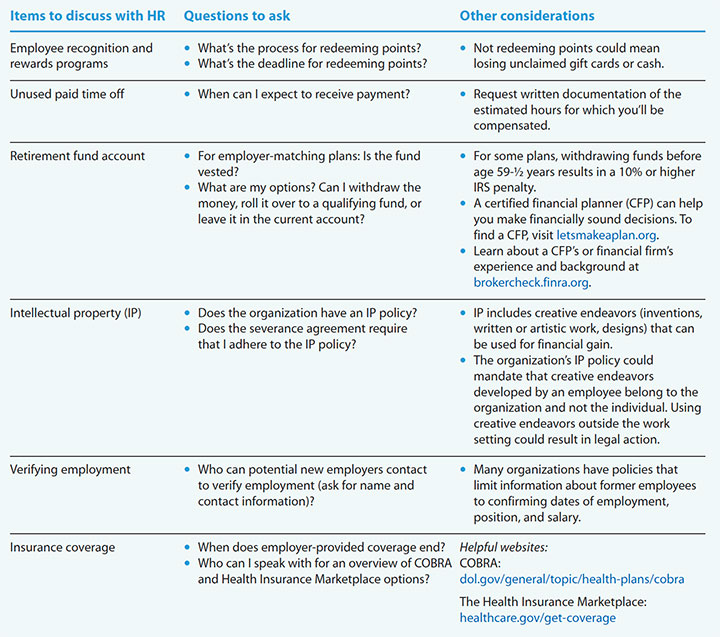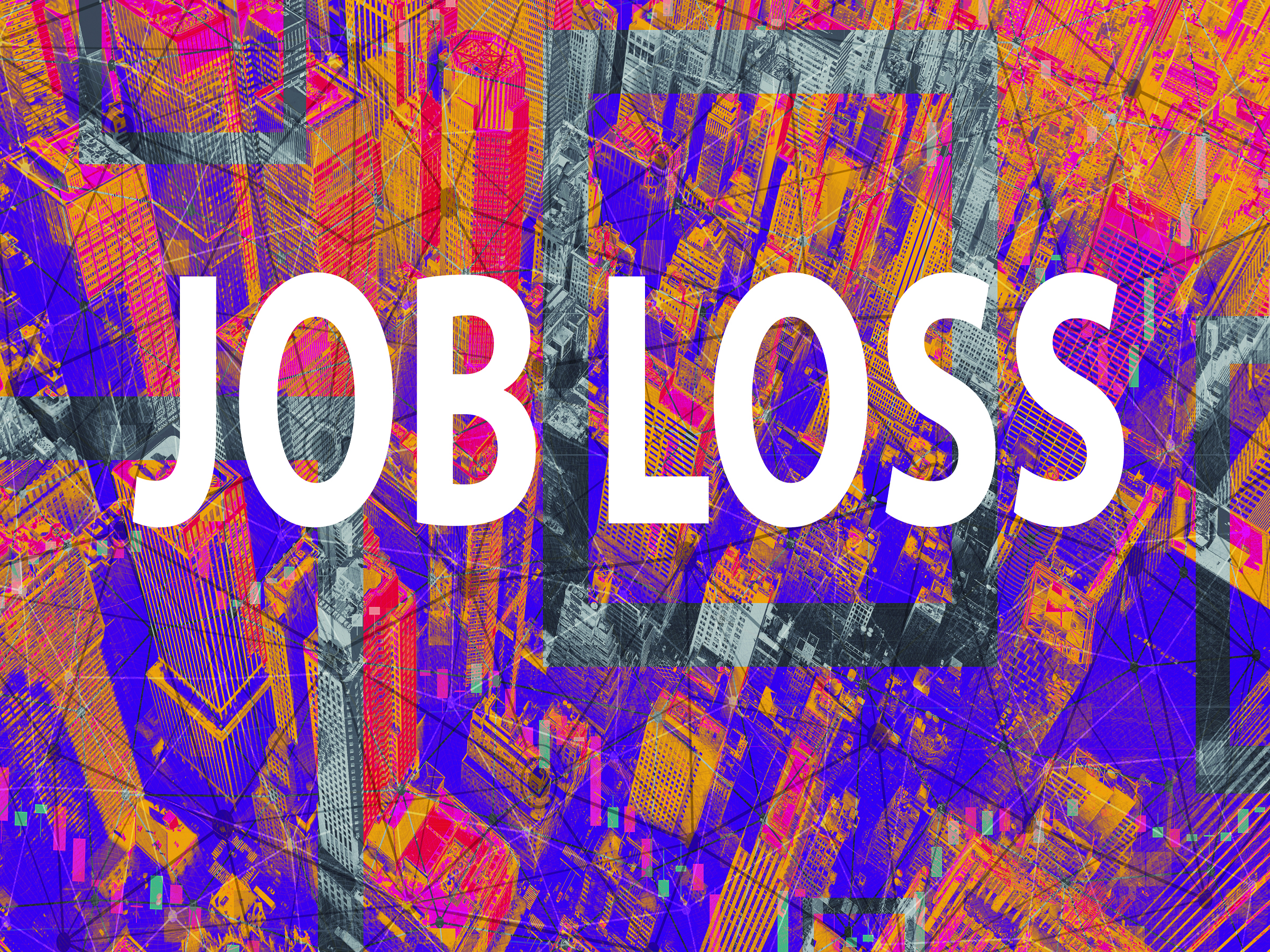Prepare now so you’re not caught off guard.
Takeaways:
- Most nurses never expect to be terminated from their jobs.
- Preparing for unexpected job loss can help you navigate the notification process, understand what’s required of you by human resources, determine how to address your immediate needs.
Editor’s note: This is the first of a two-part series on nurse job loss. Part 2 will appear in the September issue of American Nurse Journal.
A common misconception is that nurses will always have a job. Beginning with nursing school, and frequently throughout our careers, we hear this refrain. However, unexpected unemployment is a reality, and nurses must remain professionally nimble and bank their energy so they can easily pivot if necessary.
This two-part series aims to help nurses prepare for an unexpected job loss. In Part 1, we discuss the termination process, how to communicate a job loss to others, and steps for addressing immediate practical needs. Part 2 will focus on strategies for self-care and how to successfully step into a new role.
Termination process
The termination process includes notification, human resources (HR) tasks, and retrieving personal items.
Notification
Termination notification is an employee’s official communication of job dismissal. It typically occurs in a meeting with a supervisor and an HR representative with only minutes or hours of notice.
This conversation can be distressing and confusing, especially if the job separation is the result of a nonperformance issue such as budgetary reductions. Maintaining your professional composure can be vital when being considered for rehire and in securing colleague references. If possible, before going into the meeting, reach out to a friend or family member. Spending a few minutes with someone who can offer genuine words of support and concern may reduce stress.
In the meeting, work to maintain your composure. Take deep cleansing breaths and focus on the facts provided rather than negative thoughts or emotions. However, expressions of sadness are acceptable. This is especially true if it means the loss of good professional relationships and fulfilling work.
Demonstrations of kindness and graciousness make powerful impressions. Expressing empathy for those making the termination decision and offering words of gratitude for the professional opportunities you’ve had and for positive aspects of the work setting can help you feel empowered and allow for a dignified departure.
Avoid making accusations or getting defensive. A termination meeting isn’t the venue for discussing grievances. The decision has been made, so arguing is futile.
Human resources
Several HR-related tasks may need to be completed before leaving the workplace. For example, find out where you should return equipment (such as laptops and cell phones) issued to you by the organization as well as the deadline for returning it. According to the Society of Human Resource Management (SHRM), some states have laws allowing employers to deduct money from a terminated employee’s final paycheck for unreturned equipment.
Some organizations offer severance packages to laid-off employees. These packages can contain financial compensation for being terminated and an extension of employment-related benefits. According to SHRM, no federal regulations require organizations to provide severance packages. Receiving a package can be helpful, but you may be required to sign an agreement that includes not filing a wrongful termination lawsuit. Severance agreements might require that you not seek re-employment with the organization for a period of time and not discuss any aspects of the separation or severance with anyone. (See Working with HR.)
Working with HR
If you’re terminated from your job, work with human resources (HR) to ensure you receive any money owed to you, know your options regarding retirement funds and health insurance coverage, and understand relevant organization policies.


Retrieving personal items
How you retrieve personal items from your assigned workspace will depend on your organization’s policy. Some organizations require that a supervisor or designated colleague pack up items and notify you of when and where to pick them up. Other organizations will allow you to pack up your personal items as long as you’re accompanied by a supervisor or other employee. This process can be difficult and humbling. Keep interactions with coworkers brief and positive.
You may need to ask permission to access computer files to retrieve stored items, including personal photos, continuing education certificates, documents related to professional licensure or certification, and personal appointments recorded on your work calendar.
How to tell others
After a job loss, carefully consider how to share termination specifics and with whom. Expressing feelings of anger, anxiety, and other negative emotions can be cathartic and healing, especially when shared with a small circle of friends or family members who are supportive and empathetic, understanding that any information is confidential. However, dwelling on negative emotions for too long can be counterproductive to moving forward. Part 2 of this series will offer suggestions for moving past negative emotions. Remember that disclosing knowledge of an organization’s operational processes or information that violates the Health Insurance Portability and Accountability Act could lead to legal prosecution and disciplinary action from licensing or certification boards.
Many nurses may want to tell others about their job loss via social media. This can be beneficial, but should be done carefully. (See Job loss and social media.)
Job loss and social media
Communicating your job loss via social media can let others within your network know that you’re looking for a new position. However, avoid expressing discontentment about former supervisors or organizations. Remember that employers frequently visit potential new hires’ social media pages to learn more about them.
Kerry Hannon, career expert and author, suggests using social media platforms to
- express gratitude to your former employer for professional growth opportunities and positive working relationships
- communicate excitement about the chance to develop new skills, travel, or pause for a period of quiet reflection while waiting for your next career opportunity
- ask social media connections for job search advice.
Addressing immediate practical needs
Unplanned and unforeseen unemployment can be financially challenging. In addition to the loss of a regular paycheck, you’ll also lose access to many employer-provided benefits.
Wage loss
Wage loss can be a major stressor. Ideally, everyone should have an emergency expense fund that covers 3 to 6 months of living expenses. A Federal Reserve survey found that almost 40% of adults would have difficulty covering an unexpected $400 expense, suggesting that many lack an adequate emergency expense fund.
If you’ve experienced job loss due to layoffs, you probably qualify for unemployment benefits. Each state’s government workforce service oversees their unemployment insurance program. Visit your state’s official website to learn about the benefits you’re entitled to.
Receiving unemployment benefits may help alleviate more than just financial concerns. Findings from a study of 7,558 unemployed individuals by Shahidi and colleagues and a systematic review of 12 unemployment studies by Renahy and colleagues suggest that unemployment benefits may positively affect an unemployed individual’s health. The detrimental health effects of job loss are well-documented in the literature. Applying for unemployment benefits can be a proactive health measure after losing a job.
Benefits loss
The expense of paying for personal health insurance after losing it through your employer may tempt you to forego coverage. However, an accident or major illness can quickly result in thousands of dollars of medical bills that you may be unable to pay. Keep in mind that although the federal penalty for not having health insurance was eliminated in 2019, some state jurisdictions may have health insurance mandates.
For those ineligible to switch to a significant other’s health insurance plan, the Consolidated Omnibus Budget Reconciliation Act (COBRA) and the Health Insurance Marketplace are options. COBRA mandates that those eligible after job loss may remain on their former employer’s group plan for up to 18 months. COBRA offerings can include the following from a former employer:
- dental, vision, and prescription drug plans
- flexible spending account
- health reimbursement program
- wellness and employee assistant programs
- alcohol and drug treatment.
Although COBRA is a viable option, it can be costly. According to the U.S. Department of Labor, those who qualify may be responsible for paying the entire premium up to 102% of the cost of the plan.
Healthcare coverage through the Health Insurance Marketplace may be more affordable. This program, overseen by the federal government, is part of the 2010 Patient Protection and Affordable Care Act. Several plans are available, and costs vary depending on geographic location and coverage level.
Job termination also can affect your eligibility for other employment-related benefits, such as childcare, gym memberships, and internet or cell phone providers. Contact these services directly to identify potential non-employment related discounts.
Be prepared
Many nurses never anticipate sudden unemployment. Being prepared with a plan for how you’ll handle notification, share the information, and take care of immediate practical needs can help you successfully transition into your next career.
Phyllis Hooten is a freelance writer in Hewitt, Texas. Aida J. Sapp is a psychiatric mental health nurse practitioner at Baylor Scott & White Health in Temple, Texas.
References
American Hospital Association. Fact sheet: COVID-19 pandemic results in bankruptcies or closures for some hospitals. aha.org/fact-sheets/2020-11-09-fact-sheet-covid-19-pandemic-results-bankruptcies-or-closures-some-hospitals
Federal Reserve. Report on the economic well-being of U. S. households in 2018. May 28, 2019. federalreserve.gov/publications/2019-economic-well-being-of-us-households-in-2018-dealing-with-unexpected-expenses.htm
Hannon K. Laid off? Tell the world on social media. August 25, 2016. forbes.com/sites/nextavenue/2016/08/25/laid-off-tell-the-world-on-social-media/
Jin RL, Shah CP, Svoboda TJ. The impact of unemployment on health: A review of the evidence. CMAJ. 1995;153(5):529-40.
Renahy E, Mitchell C, Molnar A, et al. Connections between unemployment insurance, poverty and health: A systematic review. Euro J Public Health. 2018;28(2):269-75. doi:10.1093/eurpub/ckx235
Shahidi FV, Muntaner C, Shankardass K, Quiñonez C, Siddiqi A. The effect of unemployment benefits on health: A propensity score analysis. Soc Sci Med. 2019;226:198-206. doi:10.1016/j.socscimed.2019.02.047
Society of Human Resource Management. How-To Guides: How to conduct a layoff or reduction in force. www.shrm.org/resourcesandtools/tools-and-samples/how-to-guides/pages/conductlayofforrif.aspx
Society of Human Resource Management. HR Q & A: A terminated employee has not returned company equipment. Can the employer hold the paycheck until the equipment is returned, or deduct the cost from the final pay? January 8, 2019. www.shrm.org/resourcesandtools/
tools-and-samples/hr-qa/pages/returnequipment.aspx
Stauder J. Unemployment, unemployment duration, and health: Selection of causation? Euro J Health Econ. 2019;20(1):59-73. doi:10.1007/s10198-018-0982-2
U.S. Bureau of Labor Statistics. Economic news release: Table A-12. Unemployed persons by duration of unemployment. June 4, 2021. www.bls.gov/news.release/empsit.t12.htm
U.S. Department of Labor. Continuation of health coverage (COBRA). dol.gov/general/topic/health-plans/cobra

















